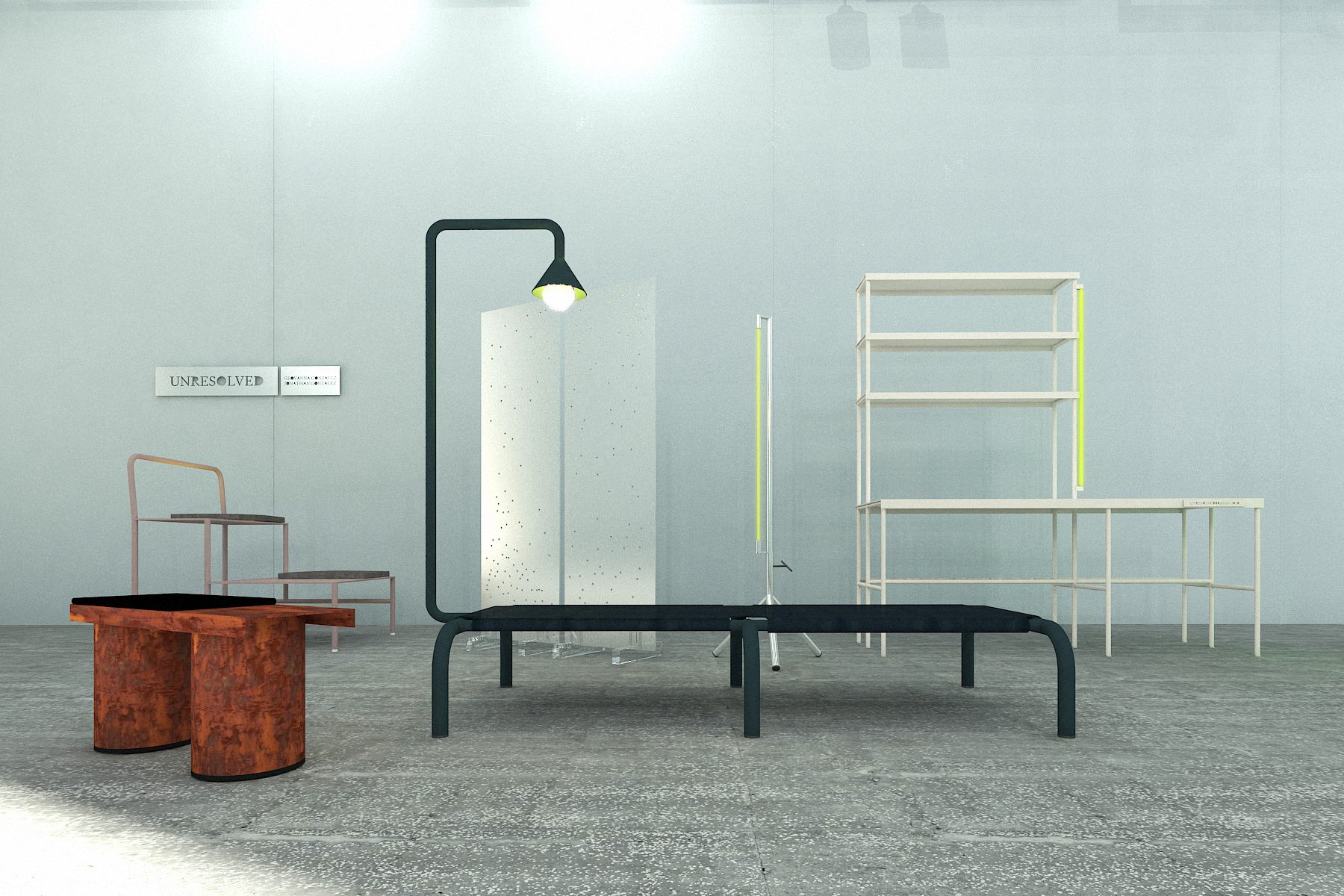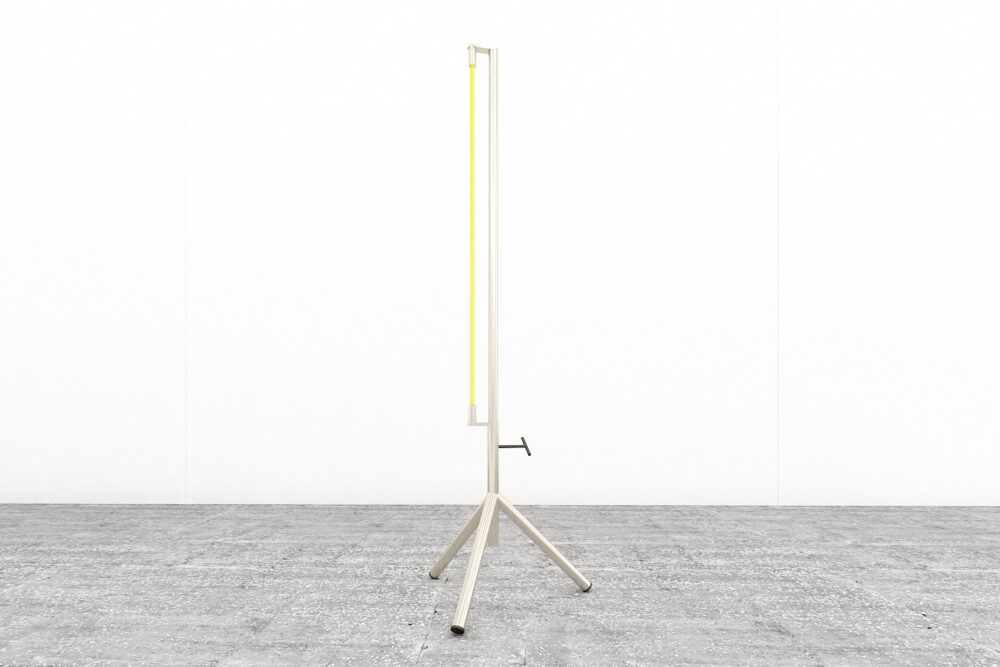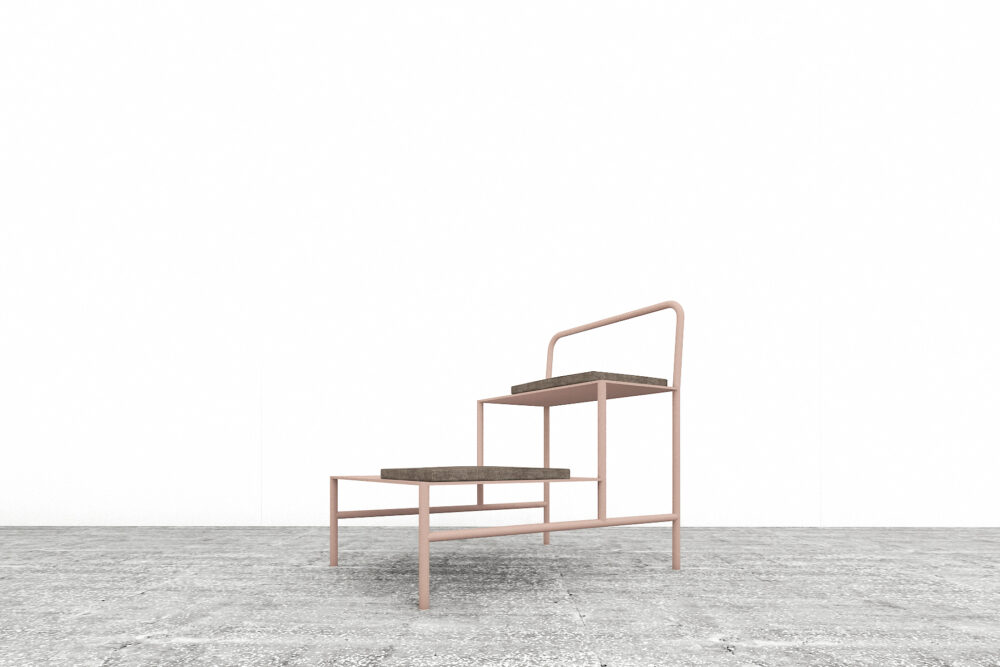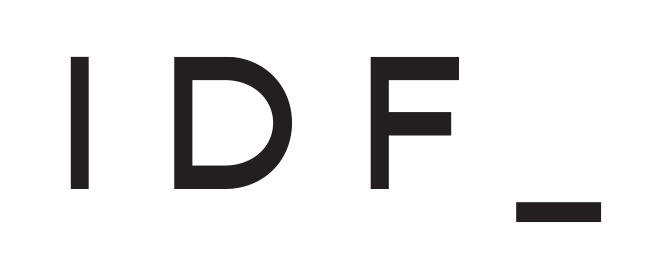
26 Dec THE UNRESOLVED COLLECTION – An Exploration into 2020’s Reprogramming of Our Lives
IDF shares Miami-based, contemporary art and design-focused, Tile Brush Gallery‘s exhibition entitled The UNRESOLVED Collection, a collaboration between Geovanna Gonzalez and Jonathan Gonzalez. 2020 has certainly pushed most of the population to restructure their homes into work and living spaces. The changes made have not only affected how we adapt to our physical space but all our mental space. Our sleep cycles, our time management, our leisure periods – all have been confined, all have been reprogrammed. The boundaries between work and leisure, between labor and rest, between public and private, are more compromised than ever.
Gonzalez & Gonzalez collaboration on the UNRESOLVED collection explores how design and art are complicit in that reprogramming, and how they can act as tools of resistance. The object of each piece in the collection is a tool of creative labor. The iconography is derived from forms that are understandable to everyone (ladder; floodlight; pencil; eraser). The new readings offered by Gonzalez & Gonzalez, their reprogramming of these recognizable objects, merge the iconic formal qualities of the “original” objects with concepts relating to the precarity of creative labor.
“…By operationally reprogramming everyday objects, we reshape both their use and meaning; by extension, we want to challenge the very concept of creative labor.”
The collection makes visible the ways in which tools and programs (from pencils to screens, chairs to software) are used to firmly resolve and repose us, to sit us down, to tie us to capitalist function. As GeoVanna Gonzalez says, “We want UNRESOLVED to question work, labor, equity, and inclusion. By operationally reprogramming everyday objects, we reshape both their use and meaning; by extension, we want to challenge the very concept of creative labor.”
The new readings of these designs challenge the function of labor-based objects, and labor itself. Where the original stepladder was intended to climb, to be used to reach and retrieve, to extend the human body’s capacity to organize and store goods, the new ladder has been liberated of such burden. The UNRESOLVED ladder is now a place for rest, communing, display, and dialogue. The ladder has been unresolved.
As well as its usual noun function, unresolved in this show operates as a verb. The pieces work to unresolve intention, to entangle meaning, to complicate and question expectation. Inspired by objects with a highly refined purpose, Gonzalez & Gonzalez reference cast concrete fence posts in South America (Brazil, specifically); steel and wood trusses; street and highway lamps. These are forms, textures, and intentions that bear the responsibility of labor, the reminder of its pervasiveness. Everything has to be made by someone.
As Jonathan Gonzalez says, “We don’t like to impose; we think instead of freeing a form from its former self. The objects are available to be read for these new purposes, or merely because you like the way they look. They can be resolved or unresolved by the viewer however you want. This liberation of forms is integral to the work; it recovers some of our humanity, our autonomy; helping us to find again a slow space; to rediscover – to unresolve – what it means to be in control of our life.”

The daybed is a way to reflect on the notions of rest: rest as forbidden; rest as a perk; rest as monitored; rest as cost. Depending on your wealth, race, or gender, rest is a privilege. (Work isn’t rest). Powder-coated, welded tube aluminum: a durable and lightweight material that makes it easy to move around and carry (work requires sleep). A detachable lamp is attached at the head of the cot, acting as a reading light (work is never done). The sleeping surface is made from a deep blue neutral leather and upholstered to the frame.

The table as a creative workspace (work turns anything into a desk). Can also be used as a room divider (work creates offices everywhere). Aluminum working surface, with stacked aluminum shelves for storing books, tools, objects (work is multi-storied). A neon light is incorporated (work is lubrication).

Inspired by powerful, industrial flood lights – transformed to be brought into the home office (work requires wide-awake focus). The piece is centered around a unique, handmade neon light. The neon is framed with a square aluminum tubing and then grounded on the floor with a minimal aluminum tripod leg, making this piece feel like a freestanding sculpture (work offers stability).

A minimalist sculpture, a storage unit, a lighting block (work is multifaceted). The piece has no definite orientation, no front or back, no right way up (work is dizzying). Sheets of aluminum with a fine line of 16 LED lights on one side, a vacant rectangle void on the other. It could be utilized as a bookshelf, or display case, or simply as a minimal, elegant, and useless way to light a space (work has no teleology).

An industrial step-stool transformed into a seating space for one or two people at a time. Echoes the communality of housing stoops: post-work or lunch-break gathering spaces that are both in a public and private space (work requires recharging). Made from powder-coated, welded aluminum plate surfaces, with unique handmade patterning by both artists. Includes three custom cushions, two in leather, one in suede (work’s pain must be ameliorated).

The room divider’s surface features a collaborative painting from both artists (work is collective). The light from cast shadows was captured in paint, making the divider both an object to look at (work is distracting) and also useful as a tool for subdividing any space into office space (work is invasive). Custom hole-punched sheets of brushed aluminum, with acrylic glass feet. The laser-cut etching includes the name of the piece on the side of the feet.

A gathering space that can be utilized in numerous ways (work is adaptive). Part desk, part dining table, part cards table, part book stand, part drink stand, part footrest (work is the sum of many parts). Aluminum with a powder coat and matte clear coat finish, industrial wheel bearing feet, with a black tinted acrylic tabletop.


